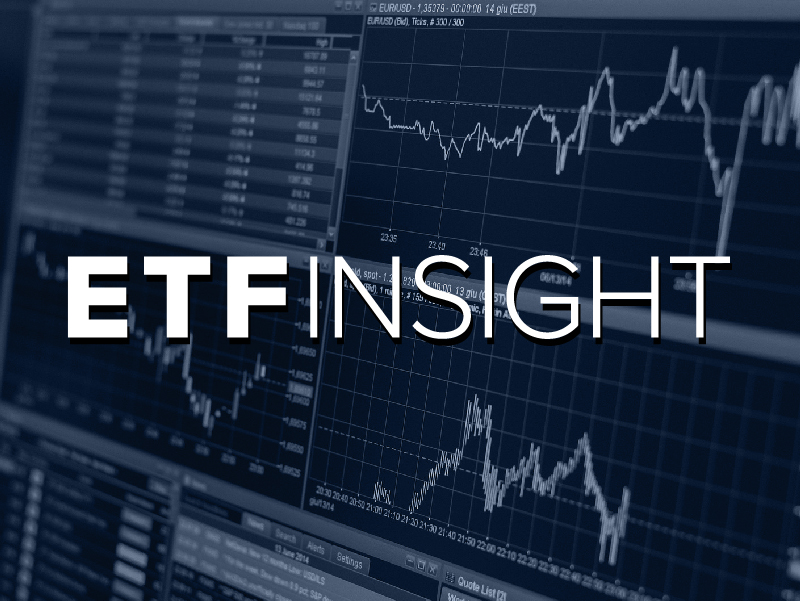The record ETF trading volumes seen amid the coronavirus turmoil has highlighted issues with the lack of standardisation in the publication of an ETF’s daily holdings.
The London Stock Exchange (LSE), for example, saw a record $50.9bn turnover across ETPs on its exchange last month as investors turned to the ETF wrapper for liquidity during market volatility.
The record volumes has thrown one area of the ETF ecosystem that has received little attention into the spotlight, the publication of daily holdings by ETF issuers.
Andrew Barnett, global head of product strategy at data management provider Rimes, has warned the lack of standardisation around the publication of daily holdings is stopping investors from understanding the value of the ETFs they own.
“Even in the best of times, ETFs are highly complex vehicles that require a sophisticated approach to data management.
“The challenge is there is no standardisation when it comes to the way ETF issuers publish their daily holdings,” Barnett continued. “Each will use its own content, files and delivery channels and buyers need to spend time and effort interpreting and processing these files before they can be distributed for use in relevant business functions such as performance, portfolio management, risk and compliance, and research.”
The publication of daily holdings became something of a hot topic after the SEC gave the green light to non-transparent ETFs last year.
The case in favour of daily holdings disclosure – and against the new non-transparency rules – was made by Morningstar which pointed out it was vital for investors.
“We understand that ETF sponsors need the flexibility to deviate from pro rata baskets,” the Morningstar commentary to the SEC stated.
“As such, all baskets that were utilised in a day should be disclosed, at a minimum, by the end of the day. Such disclosure would allow analysis of whether the baskets are facilitating appropriate market making and liquidity, particularly during times of market stress.”
Furthermore, Barnett said the laboured attempts to source, normalise, validate and deploy the data threaten ultimately to “undermine the speed and flexibility that should come with the ETF model”.
“The complexity acts as a block to investors being able to understand their true economic exposure in an ETF, validate investment compliance or unpack their performance.”
But is this truly a blocker? To delve a little deeper, we need to look at the area of portfolio construction files (PCFs). Bernie Thurston, CEO of Ultumus, pointed to the race to the bottom on ETF pricing as being a large factor.
“The major issue we run into these days is that the major PCF structures were created 15 years ago, but as the spreads have got tighter and tighter, [there has been] margin compression and in order to price accurately, people need more and more information,” Thurston explained.
In other words, the informational needs have clearly altered as the market has grown – and become more competitive – but the infrastructure has not kept up.
Thurston’s colleague Alison Holmes added Ultumus is attempting to persuade issuers to provide a global PCF format. “What they show in the open document is the complete transparency of the fund. It will show the tracking basket – the full fund holdings, the net asset value, as well as the deliverable basket [or creation basket].”
“Even BlackRock, who have progressed this quite significantly, have not got far enough down the line as yet,” Thurston continued. “They have released the [standardised] equity version, but fixed income will likely come next year now. And with other providers, - especially those who have grown by acquisition – they have a lot of different types of files.”
No need to know
Yet, such arguments are not universally accepted as having much validity. “My question would be why a buy-side investor needs this granularity on a near real-time basis,” Mark Northway, investment manager at Sparrows Capital, argued.
“What an investor needs from an index product is exposure to the underlying index; an understanding of the index composition is generally sufficient for buy-side risk management purposes.”
Northway added the “real reason” for anyone needing a better than daily analysis of discrepancies between the index and the ETF components is to be able to “arb that difference”.
“Arbitrageurs and high-frequency traders are not the friend of either the buy side investor or of the market maker in this instance.”
Indeed, Northway raised questions around the very idea that ETFs are complex. That, he says, is not accurate. “Complexity and data volume are not the same thing,” he points out. “An unleveraged, full physically-replicated ETF is a wonderfully simple concept.”
This point is picked up on by Rumi Mahmood, ETF analyst at Nutmeg. “By and large the complexity is lower in ETFs and the transparency is higher,” he said. “ETFs are the only fund product offering true daily transparency.”
This stands in contrast to active funds, Mahmood added. With ETFs, he said Nutmeg is able to model its risk on a daily basis, at an underlying securities level and with an understanding of the economic exposure.
“This would not be possible with most mutual funds, who leave their owners blind to the economic risks in their portfolios from month to month.”.
Compare that with ETFs where investors can, if they wish, ask the provider for the holdings’ information.
He said that different buyers will have different data requirements depending on their investment goals but in his experience the information is largely readily available to those who seek it.
“Perhaps providers need to make this clearer,” he concluded.
ETF Insight is a series brought to you by ETF Stream. Each week, we shine a light on the key issues from across the ETF industry, analysing and interpreting the latest trends in the space. For last week’s insight, click here.
Sign up to ETF Stream’s weekly email here


